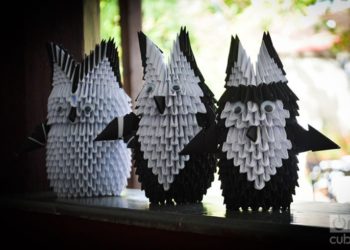A paper artisan
Marcel Gomez Soria is a 13 year old child who carries a shoebox with him wherever he goes to protect his paper creations inside. In his backpack he has a crane, a bunch of flowers, a frog, a cat, a dragon, and a family of owls. This child from Trinidad is caught in the origami universe, a practice that doesn’t have deep roots in these parts of central south Cuba. “I like this more than playing baseball, spin tops or marbles,” he says in a low voice while he takes a blank sheet of paper to create a new figure. Marcel isn’t a boy of many words, he prefers to work in order to fight off the nerves and the blinking recorder. Since the day he showed them the hand-held fan (to combat the heat of the classroom) made from two cables, a battery, the motor of a toy boat and a blade made from an ice-cream pot, his family was aware of the boy’s inventiveness, but no one could have predicted that all of his skills would lead to paper. Marcel. Photo: Carlos Luis Sotolongo Puig “It all started about three years ago when I was sick in a...




